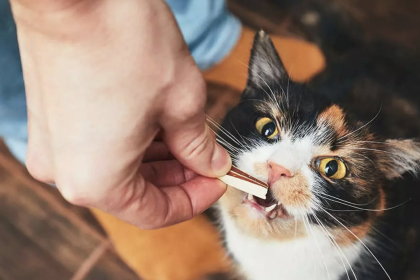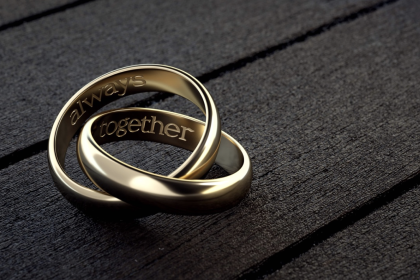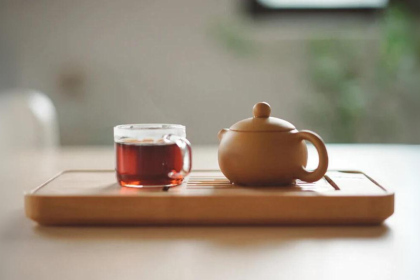How to customize your Warhammer 40k army
Are you a fan of board games? If so, you probably love…
How To Prepare A Veterinary Exit Strategy (In 2023)
What Is A Veterinary Exit Strategy? Not to complicate things: a veterinary…
Credit Card Traps: Common Missteps Made By Americans
Credit cards are part and parcel of modern living. They provide a…
Dental Health: Choosing Treats that Benefit Your Cat’s Teeth
Feline dental health is an area that often goes unnoticed until a…
Using Free VPNs to Their Full Potential: A Technical Perspective
Free VPNs have become a potent tool for preserving online privacy and…
Finding the Best Disability Lawyer Near Me: Tips, Legal Expertise, and Claims Insights
Are you on the hunt for the best disability lawyer near me?…
How to Care for Engraved Engagement Rings
Embarking on the journey of a lifetime with an engagement ring is…
The Art of Storing Loose Leaf Tea: A Journey Through Teaware Evolution
Tea, with its millennialong history in China, seamlessly integrates life, philosophy, and culture. The teaware associated with it has become an integral part of this rich history over time. For Western consumers, understanding the backstory not only enhances the taste of every sip but also brings them closer to China's profound tea culture. 1. Evolution of Teaware The history of tea culture is ancient. From the initial simple brewing to the current sophisticated Gongfu tea, teaware has always accompanied its development. Before the Han Dynasty, there were no specialized teapots; general wine or food utensils were used. It wasn't until the rise of tea culture during the Eastern Han Dynasty that specialized teaware emerged. During the Tang Dynasty, boiling tea was the primary method, making ceramic and metal boilers the chosen teaware. By the Yuan Dynasty, loose-leaf tea became popular, shifting the brewing method to using boiling water. In the Ming Dynasty, small teapots made of purple clay (zisha) and porcelain became prevalent. Moreover, the color of tea bowls transitioned from dark to green and white porcelain, highlighting the color of the tea soup. The zisha teapot became emblematic of teaware during the Ming and Qing Dynasties. Made from the unique purple clay of Yixing, Jiangsu, its material allows the aroma of the loose-leaf tea to be retained, enriching the pot with the scent over time. On the other hand, gaiwan, commonly used for Gongfu tea, especially in Guangdong and Fujian, separates the tea quickly from the water, ensuring optimal taste. 2. Brewing Tea and Its Equipment 2.1 Origin of Brewing and Suitable Teas Brewing tea refers to adding loose tea leaves into a teapot or kettle, boiling with water, and then drinking. This method was prevalent in China before the Tang Dynasty and continues to be used by nomadic tribes in the frontier regions. However, brewing in this manner might result in a stronger taste and sometimes bitterness. Fresh loose leaf green tea, new white tea, fresh raw Pu'er, Tieguanyin, and Dahongpao from Wuyi Mountain are not suitable for this method. It's more apt for fermented teas or those with prolonged storage like black tea, ripe Pu'er, Liubao tea, old white tea, aged Pu'er, aged rock tea, and old Tieguanyin. 2.2 Material and Selection of Teaware for Brewing Various materials are used for brewing tea, including clay, metal, and glass. In ancient China, clay pots were the first choice for brewing. Over time, metal vessels, symbolizing status, gained popularity. However, by the Song Dynasty, they were solely used for boiling water, not tea. The rise of ceramic teapots during the Yuan Dynasty pushed metal ones to the sidelines. Still, metallic containers for storing tea, like tin pots, remained popular due to their moisture-proof and light-proof qualities. In recent years, "old iron pots," considered antiques, have garnered attention. Yet, they might affect the tea's taste, requiring careful handling. 3.…
Kickstart Your Success: Starting a Business in Estonia
Are you an entrepreneur looking to start a business in a progressive…
How is Entrapment Defined in a New Jersey Court of Law?
Undercover operations are necessary for law enforcement to gather evidence in criminal…
MSP Website Design 101: Creating a Site That Converts and Retains Clients
In today's digital age, your Managed Service Provider (MSP) business's website plays…
How to Better Understand the Emotional Toil Suffered After a Car Wreck
Even a small car wreck, which results only in minor personal injuries,…













